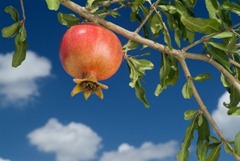 It is almost time for Sukkot, the Festival of joy! Going to Israel for Sukkot is an unforgettable experience! All around you see Sukkah’s; the streets are filled with people, and you hear cheerful celebration deep into the night (not always so great, if you want to sleep). There is an atmosphere of jubilation all over. The shelves of the vegetable and fruit vendors at the markets are filled with fresh fruit: pomegranates, figs, grapes, olives and watermelons. What a feast of color and sweetness! What makes it so extraordinary in Israel, is that the feast is celebrated by the nation. Almost everybody participates. It gives you a little taste of what it will be like after Y’Shua’s return, when all the nations go up to Jerusalem to celebrate this appointed time with YHVH. Yes, that is what it is, a special appointment with YHVH.
It is almost time for Sukkot, the Festival of joy! Going to Israel for Sukkot is an unforgettable experience! All around you see Sukkah’s; the streets are filled with people, and you hear cheerful celebration deep into the night (not always so great, if you want to sleep). There is an atmosphere of jubilation all over. The shelves of the vegetable and fruit vendors at the markets are filled with fresh fruit: pomegranates, figs, grapes, olives and watermelons. What a feast of color and sweetness! What makes it so extraordinary in Israel, is that the feast is celebrated by the nation. Almost everybody participates. It gives you a little taste of what it will be like after Y’Shua’s return, when all the nations go up to Jerusalem to celebrate this appointed time with YHVH. Yes, that is what it is, a special appointment with YHVH.
YHVH’s appointed time
Before we continue with this study, let us refocus. Whose feasts are these described in Leviticus 23?
Leviticus 23:1–2
1 YHVH spoke again to Moses, saying, 2 “Speak to the sons of Israel and say to them, ‘YHVH’s appointed times which you shall proclaim as holy convocations—My appointed times are these:
These festivals, described in Leviticus 23, are YHVHs, these are His appointed times. He invites us to participate in it. Why would we refuse His invitation? Not only are these feasts, for the most part, joyful occasions, but they are also filled with prophetic significance.
For those who are still wondering whether we could or should celebrate this festival, let us see what Y’Shua did.
What did Y’Shua do?
Y’shua went up to Jerusalem for the Feast of Sukkot; He taught in the Temple, and He was even present at the traditional water libation ceremony, which was held every day during the feast (we shall learn more about this ceremony later).
John 7:2
2 Now the feast of the Jews, the Feast of Booths, was near.John 7:10
10 But when His brothers had gone up to the feast, then He Himself also went up, not publicly, but as if, in secret.John 7:14
14 But when it was now the midst of the feast Y’Shua went up into the temple, and began to teach.John 7:37–38
37 Now on the last day, the great day of the feast, Y’Shua stood and cried out, saying, “If anyone is thirsty, let him come to Me and drink. 38 “He who believes in Me, as the Scripture said, ‘From his innermost being will flow rivers of living water.’ â€
We do not see Y’Shua teach against or condemn the celebration of Sukkot, on the contrary; He went up to Jerusalem, as it is commanded in the Torah, and participated in it.
What does Sukkot mean?
Now that we have established that we, as disciples of Y’Shua, are to celebrate this feast, let’s look at what it is about. The Feast of Sukkot is also called the Feast of Tabernacles or Booths as these are all synonyms for the Hebrew word “sukkahâ€. This feast is furthermore referred to as the Feast of Ingathering as it is celebrated after the harvest at the end of September to the beginning of October. It is a feast of rejoicing and thanksgiving for YHVH’s provision.
Sukkot comes from the word Sukkah which refers to a temporary dwelling place, and it originates from the sukkah’s wherein the Israelites dwelled when they journeyed through the wilderness on their way to the promised land.
Sukkot is one of the three pilgrimage festivals
Sukkot is one of the three pilgrimage festivals, according to the Scripture. This pilgrimage takes place to the place which YHVH chose, Jerusalem. Is this instruction still valid? If you would like to learn more, you can read about it at Pilgrimage feasts and Jerusalem, His resting place forever
Deuteronomy 16:16
16 “Three times in a year all your males shall appear before YHVH your Elohim in the place which He chooses, at the Feast of Unleavened Bread and at the Feast of Weeks and at the Feast of Booths, and they shall not appear before YHVH empty-handed.Exodus 34:22–24
22 “You shall celebrate the Feast of Weeks, that is, the first fruits of the wheat harvest, and the Feast of Ingathering at the turn of the year. 23 “Three times a year all your males are to appear before YHVH Elohim, the Elohim of Israel. 24 “For I will drive out nations before you and enlarge your borders, and no man shall covet your land when you go up three times a year to appear before YHVH your Elohim.
We see in the book of Zechariah that this “going up to Jerusalem” to celebrate the feasts will continue even after the return of Y’shua.
Zechariah 14:16–19
16 Then it will come about that any who are left of all the nations that went against Jerusalem will go up from year to year to worship the King, YHVH of hosts, and to celebrate the Feast of Booths. 17 And it will be that whichever of the families of the earth does not go up to Jerusalem to worship the King, YHVH of hosts, there will be no rain on them. 18 If the family of Egypt does not go up or enter, then no rain will fall on them; it will be the plague with which YHVH smites the nations who do not go up to celebrate the Feast of Booths. 19 This will be the punishment of Egypt, and the punishment of all the nations who do not go up to celebrate the Feast of Booths.
Everybody has different means, and it might not be possible to travel to Jerusalem for these feasts due to financial, health or other constraints. That said, if you can, consider it, it really is an unforgettable, life-changing experience. To see and experience Israel, changes your whole perspective and understanding of the Scriptures.
However, even if you can’t go to Jerusalem for the feasts, celebrating it where you are could also be rich in meaning and will help you to understand YHVH’s plan of redemption so much better.
We shall now look at some of the instructions for the feast, its application and significance. You will be amazed to see how much there is to learn, yet; one post can’t possibly do it justice.
The first day and the eighth day – a sabbath
The feast commences on the fifteenth of Tishri, five days after Yom Kippur. The first day and the eighth day are Sabbaths, therefor; no laborious work is allowed. We are instructed to proclaim these days as feast days, and we are to have a holy convocation.
Leviticus 23:34–37
34 “Speak to the sons of Israel, saying, ‘On the fifteenth of this seventh month is the Feast of Booths for seven days to YHVH. 35 ‘On the first day is a holy convocation; you shall do no laborious work of any kind. 36 ‘For seven days you shall present an offering by fire to YHVH. On the eighth day you shall have a holy convocation and present an offering by fire to YHVH; it is an assembly. You shall do no laborious work. 37 ‘These are the appointed times of YHVH which you shall proclaim as holy convocations, to present offerings by fire to YHVH—burnt offerings and grain offerings, sacrifices and drink offerings, each day’s matter on its own day—
The eighth day – Shemini Atzeret
The Eighth day is known as Shemini Atzeret. It is considered a feast day in its own right by Judaism, but is referred to as the eight day of Sukkot in Leviticus. The commandment to dwell in a Sukkah does not include this day, but it is a Sabbath and no normal work is allowed.
The eighth day, traditionally, marks the beginning of a new Torah reading cycle, and this celebration is known as Simchat Torah. This celebration commences in the evening of the eighth day. During this celebration, the Torah Scrolls are removed from the ark and are carried around in a series of circuits. The people, especially the men and boys follow this procession singing and dancing. It may overflow from the synagogue onto the streets. In Israel, it overflows onto the Kotel, where it continues well into the night.
The Eighth day or the Feast of Conclusion has, historically, been a very significant day. It was on this day that King Solomon dedicated the first Temple to YHVH.
The dedication of the first Temple
2 Chronicles 7:8–10
8 So Solomon observed the feast at that time for seven days, and all Israel with him, a very great assembly who came from the entrance of Hamath to the brook of Egypt. 9 On the eighth day they held a solemn assembly, for the dedication of the altar they observed seven days and the feast seven days. 10 Then on the twenty-third day of the seventh month he sent the people to their tents, rejoicing and happy of heart because of the goodness that YHVH had shown to David and to Solomon and to His people Israel.
On this day, the glory of YHVH filled the Temple.
The ark was taken into the most holy place by the priests, when they came out, the trumpeters blew their trumpets while the singers sang glory to YHVH, and the house was filled with a cloud (2 Chron 5:11-14). This cloud was the glory of YHVH.
Then Solomon prayed a prayer of dedication and when he was finished praying, the glory of YHVH filled the Temple once again, so much so that the priests could not enter into the Temple. The people bowed down to the pavement with their faces toward the ground, and they worshiped and gave praise to YHVH.
2 Chronicles 7:1–3
1 Now when Solomon had finished praying, fire came down from heaven and consumed the burnt offering and the sacrifices, and the glory of YHVH filled the house. 2 The priests could not enter into the house of YHVH because the glory of YHVH filled YHVH’s house. 3 All the sons of Israel, seeing the fire come down and the glory of YHVH upon the house, bowed down on the pavement with their faces to the ground, and they worshiped and gave praise to YHVH, saying, “Truly He is good, truly His lovingkindness is everlasting.â€
You can read Solomon’s prayer of dedication in 2 Chron 6: 14-42. It is a truly amazing prayer. We are to consider the prayer of King Solomon, for we are captives in a land far off or near.
2 Chronicles 6:36–39
36 “When they sin against You (for there is no man who does not sin) and You are angry with them and deliver them to an enemy, so that they take them away captive to a land far off or near, 37 if they take thought in the land where they are taken captive, and repent and make supplication to You in the land of their captivity, saying, ‘We have sinned, we have committed iniquity and have acted wickedly’; 38 if they return to You with all their heart and with all their soul in the land of their captivity, where they have been taken captive, and pray toward their land which You have given to their fathers and the city which You have chosen, and toward the house which I have built for Your name, 39 then hear from heaven, from Your dwelling place, their prayer and supplications, and maintain their cause and forgive Your people who have sinned against You.
Another very significant event took place during the feast of Tabernacles, many years later. Y’shua went to the Temple during the feast of Sukkot at the time of the water libation ceremony. Some scholars say it was on the eighth day, while others say it was the seventh day, also known as Hoshana Rabbah. Why was this so significant?
Y’Shua and the water libation ceremony
Here is a description of the traditional water libation ceremony, which was observed during the first seven days of the feast of Sukkot.
On the last day of the festival, Hoshana Rabbah, literally, “on the last day, the great, of the festival.†Greek megalê (“greatâ€) corresponds to Hebrew rabbah. The seventh, last day of Sukkot was its climax. Throughout the seven days of the festival a special cohen had carried water in a gold pitcher from the Pool of Shiloach (Siloam) to be poured into a basin at the foot of the altar by the cohen hagadol. It symbolized prayer for rain, which begins the next day, on ShË’mini Atzeret; and it also pointed toward the outpouring of the Ruach HaKodesh on the people of Israel. The rabbis associated the custom with Isaiah 12:3, “With joy shall you draw water from the wells of salvation.†On the seventh day the water pouring was accompanied by cohanim blowing gold trumpets, LË’viË’im singing sacred songs, and ordinary people waving their lulavs and chanting the Hallel (Psalms 113–118), which includes in its closing verses:
Adonai, please prosper us!
Blessed is he who comes in the name of Adonai!
We have blessed you out of the house of Adonai.
God is Adonai, and he has given us light.â€
(Psalm 118:25–27)
It was in the midst of this water pouring, trumpet blasting, palm waving, psalm chanting and ecstatic joy on the part of people seeking forgiveness—and in the presence of all 24 divisions of the priesthood (see Lk 1:5N)—that Yeshua cried out in the Temple courts, “If anyone is thirsty, let him keep coming to me and drinking! Whoever trusts in me, as the Tanakh says, rivers of living water will flow from his inmost being!†Compare Isaiah 44:3, 55:1, 58:11; also the woman at the well, above, 4:6–15; and the ultimate fulfillment at Rev 22:17. In effect Yeshua was declaring, “I am the answer to your prayers.†His dramatic cry, supported by the full panoply of Temple ritual, was not misunderstood, as vv. 40–43 make abundantly clear. His subsequent proclamation, “I am the light of the world,†also based on the passage of Psalm 118 quoted above, provoked an even more agitated reaction (8:12&N, 58–59&N). 2
John 7:37–39
37 Now on the last day, the great day of the feast, Y’shua stood and cried out, saying, “If anyone is thirsty, let him come to Me and drink. 38 “He who believes in Me, as the Scripture said, ‘From his innermost being will flow rivers of living water.’ †39 But this He spoke of the Spirit, whom those who believed in Him were to receive; for the Spirit was not yet given, because Y’Shua was not yet glorified.
On this day, the glory of YHVH was again in His House, this time embodied in Y’Shua and He spoke of a future time when YHVH’s Spirit would be given to all who believe. We have seen that fulfilled at Shavuot, when the Ruach was given just after Y’Shua ascended to heaven. However, there is a time coming when we will see another fulfillment of this, a time Joel spoke of.
Joel 2:28–29
28 “It will come about after this That I will pour out My Spirit on all mankind; And your sons and daughters will prophesy, Your old men will dream dreams, Your young men will see visions. 29 “Even on the male and female servants I will pour out My Spirit in those days.
May it be soon and in our time!
We are instructed to live in booths
We are instructed to live in booths for seven days, from the first day to the seventh, the eight day is not included.
So what exactly is a booth?
Leviticus 23:40–43
40 ‘Now on the first day you shall take for yourselves the foliage of beautiful trees, palm branches and boughs of leafy trees and willows of the brook, and you shall rejoice before YHVH your Elohim for seven days. 41 ‘You shall thus celebrate it as a feast to YHVH for seven days in the year. It shall be a perpetual statute throughout your generations; you shall celebrate it in the seventh month. 42 ‘You shall live in booths for seven days; all the native-born in Israel shall live in booths, 43 so that your generations may know that I had the sons of Israel live in booths when I brought them out from the land of Egypt. I am YHVH your God.’ â€
Nehemiah 8:14–17
14 They found written in the law how YHVH had commanded through Moses that the sons of Israel should live in booths during the feast of the seventh month. 15 So they proclaimed and circulated a proclamation in all their cities and in Jerusalem, saying, “Go out to the hills, and bring olive branches and wild olive branches, myrtle branches, palm branches and branches of other leafy trees, to make booths, as it is written.†16 So the people went out and brought them and made booths for themselves, each on his roof, and in their courts and in the courts of the house of God, and in the square at the Water Gate and in the square at the Gate of Ephraim. 17 The entire assembly of those who had returned from the captivity made booths and lived in them. The sons of Israel had indeed not done so from the days of Joshua the son of Nun to that day. And there was great rejoicing.
From the Scripture we can deduce that is is some kind of a shelter made with natural materials. From the lexicon we see that a booth or a sukkah is a temporary dwelling place, a hut, tabernacle, a shelter for travelers or animals.
סֻכֹּâ€(וֹ)ת: — 1. thicket, as lion’s den Jb 38:40; — 2. hut made of branches & mats: a) in vineyard Is 1:8, shelter from. sun Is 4:6; for cattle Gn 33:17, travelers Lv 23:43, military camp 2S 11:11; metaph. for those fearing God Ps 31:21, for God Ps 27:5; = David’s empire Am 9:11; b) ḥag hassukkôt, feast of huts (trad. transl.: of booths, or of tabernacles) Lv 23:34 & oft. 3
BOOTHS, FEAST OF (Heb. hag̱ hassukkôṯ) All males (slaves as well) were required to participate in this festival.
For the entire length of this feast the Israelites were enjoined to live in booths (Lev. 23:42, Heb. sukkÅṯ) made from branches of palm trees, “boughs of leafy trees, and willows of the brook†(v. 40), which were woven together. This was to be a reminder of YHVH’s care and protection (cf. Ps. 27:5) during their wilderness wanderings (vv. 32–43) and his promise to protect them in the future, especially concerning their harvests (Deut. 16:15). 4
From a careful reading of the text, including the passage in Nehemiah, we see that these branches were intended to make the Sukkah with. These plants that are mentioned in Lev 23: 40 were intended as construction material. Just after we first started to celebrate Sukkot, I have often wondered why people walk around with various branches and a citron-like fruit. Where does this originate from?
In postexilic Judaism the Feast of Booths became a popular occasion, particularly among Diaspora Jews who undertook lengthy pilgrimages to the temple at Jerusalem. Following the Pharisaic interpretation of Lev. 23:40, the pilgrims carried a lulab (a bundle of myrtle and willow twigs, often held together with a palm frond) in their right hand and a citron in their left as they made their way to Jerusalem; thus these Jews no longer made actual booths of branches. 4
We see from the above quote that it was Pharisaic interpretation that changed the instruction of making Booths with the specified foliage to making what we know as a lulav. This material consists of what is traditionally known as the four species and each of the four materials have a symbolism according to Talmudic tradition.
What does a Sukkah symbolize?
In my research, I read an article about Sukkot by Rabbi Ari Kahn. In this article, he stated that to leave the comfort of your home and live in a booth is in essence the Sukkah experience. In doing that, we do what the Israelites did; they ventured into the desert, vulnerable to the elements, putting their faith in YHVH. This faith in YHVH is the key to Sukkot. http://www.aish.com/h/su/tai/48954136.html
The reason this Rabbi’s words ring so true to me is because we have come to regard Sukkot as a sort of training (maybe for the tribulation) Not that I am saying it is, I am merely sharing our experience with you. When you keep the feast of Sukkot, living in a temporary dwelling, away from your comforts and with other people; you are tested in many different ways. You have to get along with people in challenging circumstances, sometimes you experience severe weather, other times extreme loneliness. Oftentimes we are challenged in the very areas we need to grow in and we get a fresh new challenge every Sukkot. In this, we have come to experience YHVHs faithfulness. He has turned every challenge into a learning experience and a blessing. The bonus is you make wonderful memories and have many stories to tell!
Sukkot for the nations
There is something universal about the feast of Sukkot, not only is atonement made for the nations (as we will see later) but, we also see in Zechariah, the nations coming up to Jerusalem to celebrate the feast of Sukkot. Why Sukkot?
Sukkot a perpetual feast; even the nations will celebrate it at the end
In Zechariah 14, we are given a prophecy to tell us what is to take place on “that day,” the Day of YHVH. It is almost as if the last part of the end-time narrative is described in a very condensed way. Then, after all has taken place, we find this reference to the nations going up to Jerusalem to celebrate Sukkot year after year (Lev 23:41). Think about it, Zechariah speaks of the fulfillment of the fall feasts here; it is as if YHVH is giving us a clue to understand Zechariah 14 better. Y’Shua would come again, be King overall and the feasts and sacrifices would continue, and even the nations would participate.
Zechariah 14:16
16 Then it will come about that any who are left of all the nations that went against Jerusalem will go up from year to year to worship the King, YHVH of hosts, and to celebrate the Feast of Booths.Isaiah 56:6–7
6 “Also the foreigners who join themselves to YHVH, To minister to Him, and to love the name of YHVH, To be His servants, every one who keeps from profaning the sabbath And holds fast My covenant; 7 Even those I will bring to My holy mountain And make them joyful in My house of prayer. Their burnt offerings and their sacrifices will be acceptable on My altar; For My house will be called a house of prayer for all the peoples.â€
Atonement on behalf of the nations
We have mentioned that atonement is made for the nations. Where do we find this?
Numbers 29:12–17
12 ‘Then on the fifteenth day of the seventh month you shall have a holy convocation; you shall do no laborious work, and you shall observe a feast to YHVH for seven days. 13 ‘You shall present a burnt offering, an offering by fire as a soothing aroma to YHVH: thirteen bulls, two rams, fourteen male lambs one year old, which are without defect; 14 and their grain offering, fine flour mixed with oil: three-tenths of an ephah for each of the thirteen bulls, two-tenths for each of the two rams, 15 and a tenth for each of the fourteen lambs; 16 and one male goat for a sin offering, besides the continual burnt offering, its grain offering and its drink offering. 17 ‘Then on the second day: twelve bulls, two rams, fourteen male lambs one year old without defect;
You may want to ask where in this passage does it refer to the nations? We only find detailed instructions regarding the sacrifices during the feast of Sukkot. The section in bold is repeated seven times, but every time the bulls are reduced with one. The total number of bulls were (13+12+11+10+9+8+7=70). What is the meaning of this?
G-d appointed Israel a kingdom of priests to atone for all these nations, and appointed Jerusalem a house of prayer for all the peoples.
We should offer up prayers for the nations on each day of Sukkot, we should pray for their redemption. If we don’t do it who would?
It reminded me of this passage in Ezekiel:
Ezekiel 22:30
30 “I searched for a man among them who would build up the wall and stand in the gap before Me for the land, so that I would not destroy it; but I found no one.
Y’Shua, a light to the nations
Y’Shua was called to be a light to the nations (Isa 42:6), it is then also at Sukkot where He, during the menorah lighting ceremony, said
John 8:12
12 Then Y’shua again spoke to them, saying, “I am the Light of the world; he who follows Me will not walk in the darkness, but will have the Light of life.â€
When Y’Shua said this, He was pointing to the prophecy in Isaiah, which referred to Him.
Isaiah 42:6
6 “I am YHVH, I have called You in righteousness, I will also hold You by the hand and watch over You, And I will appoint You as a covenant to the people, As a light to the nations,
All this came to pass during the feast of Sukkot, isn’t it just wonderful?
Sukkot the feast of rejoicing and giving
Sukkot is a joyful occasion, a time of thanksgiving to YHVH for His bountiful provision and a time of giving and sharing with others. We are to rejoice with our family, our servants, the Levite, the stranger, the orphan and the widow.
Deuteronomy 16:13–17
13 “You shall celebrate the Feast of Booths seven days after you have gathered in from your threshing floor and your wine vat; 14 and you shall rejoice in your feast, you and your son and your daughter and your male and female servants and the Levite and the stranger and the orphan and the widow who are in your towns. 15 “Seven days you shall celebrate a feast to YHVH your Elohim in the place which YHVH chooses, because YHVH your Elohim will bless you in all your produce and in all the work of your hands, so that you will be altogether joyful. 16 “Three times in a year all your males shall appear before YHVH your Elohim in the place which He chooses, at the Feast of Unleavened Bread and at the Feast of Weeks and at the Feast of Booths, and they shall not appear before YHVH empty-handed. 17 “Every man shall give as he is able, according to the blessing of YHVH your Elohim which He has given you.
What does it mean to rejoice?
samach (שָׂמַח, 8055), “to rejoice, be joyful.â€
Samach usually refers to a spontaneous emotion or extreme happiness which is expressed in some visible and/or external manner. It does not normally represent an abiding state of wellbeing or feeling. 5
To rejoice is to be joyful in such a way that your joy finds a visible expression. YHVH tells us how to express this joy. We are to celebrate a feast before Him, at the place He chooses, with others. Furthermore, we are not to come empty-handed, but give according to the blessing which He has given us. This is the second tithe, the tithe that is commanded to be used to celebrate the feasts with (Deut 14:22-27). Giving this tithe is an expression of our joy and thankfulness for YHVH’s provision. You can learn more about tithing at Tithing, give unto YHVH what is due to Him
A special instruction for the Sabbatical year
Every seven years is a Sabbatical year. (We have written quite a few articles about it, if you are interested in learning more). We are instructed to read the entire Torah during Sukkot when it is the Sabbatical year.
Deuteronomy 31:10–13
10 Then Moses commanded them, saying, “At the end of every seven years, at the time of the year of remission of debts, at the Feast of Booths, 11 when all Israel comes to appear before YHVH your Elohim at the place which He will choose, you shall read this law in front of all Israel in their hearing. 12 “Assemble the people, the men and the women and children and the alien who is in your town, so that they may hear and learn and fear YHVH your Elohim, and be careful to observe all the words of this law. 13 “Their children, who have not known, will hear and learn to fear YHVH your Elohim, as long as you live on the land which you are about to cross the Jordan to possess.â€
This experience was important for two reasons.
o Second, the experience of the pilgrimage to the central sanctuary—which meant trusting God for their homes left behind and for the journey ahead—reenacted something of the original Exodus from Egypt. It was an ideal time to receive the Word in a spirit of faith so that they might learn to fear the LORD (see comments on 4:10) and to follow carefully all the … Law. â€Follow carefully†is an admonition occurring frequently in the latter chapters of this book (16:12; 17:19; 19:9; 24:8; 28:1, 13, 15, 58; 29:9; 31:12). This repetition shows Moses’ concern for strict obedience. Children too would benefit from this for they also, by hearing it, would learn to fear the LORD. 6
Conclusion
Sukkot is the last feast in YHVH’s cycle of righteousness. It is the conclusion of YHVH’s plan of redemption and prophetically points to the wedding feast and beyond, when we will be restored to YHVH’s way. Each year that we celebrate Sukkot in faith, with joy, we are being restored back to Him a little more. Let us embrace this time of learning and rejoice in Him, looking forward to the future fulfillment of this feast when Y’Shua will dwell with us!
References
- Myers, A. C. (1987). The Eerdmans Bible dictionary (167). Grand Rapids, Mich.: Eerdmans.
- Stern, D. H. (1996). Jewish New Testament Commentary : A companion volume to the Jewish New Testament (electronic ed.) (Jn 7:37). Clarksville: Jewish New Testament Publications.
- Holladay, W. L., Köhler, L., & Köhler, L. (1971). A concise Hebrew and Aramaic lexicon of the Old Testament. (255–256). Leiden: Brill.
- Myers, A. C. (1987). The Eerdmans Bible dictionary (167). Grand Rapids, Mich.: Eerdmans.
- Vine, W. E., Unger, M. F., & White, W. (1996). Vol. 1: Vine’s Complete Expository Dictionary of Old and New Testament Words (196). Nashville, TN: T. Nelson.
- Walvoord, J. F., Zuck, R. B., & Dallas Theological Seminary. (1983-). The Bible knowledge commentary : An exposition of the scriptures (Dt 31:9–13). Wheaton, IL: Victor Books.


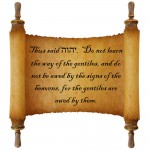

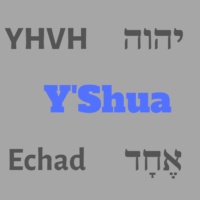
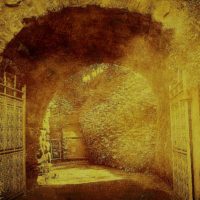


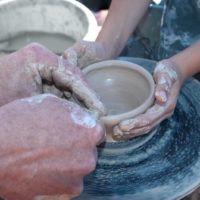
Leave a Reply